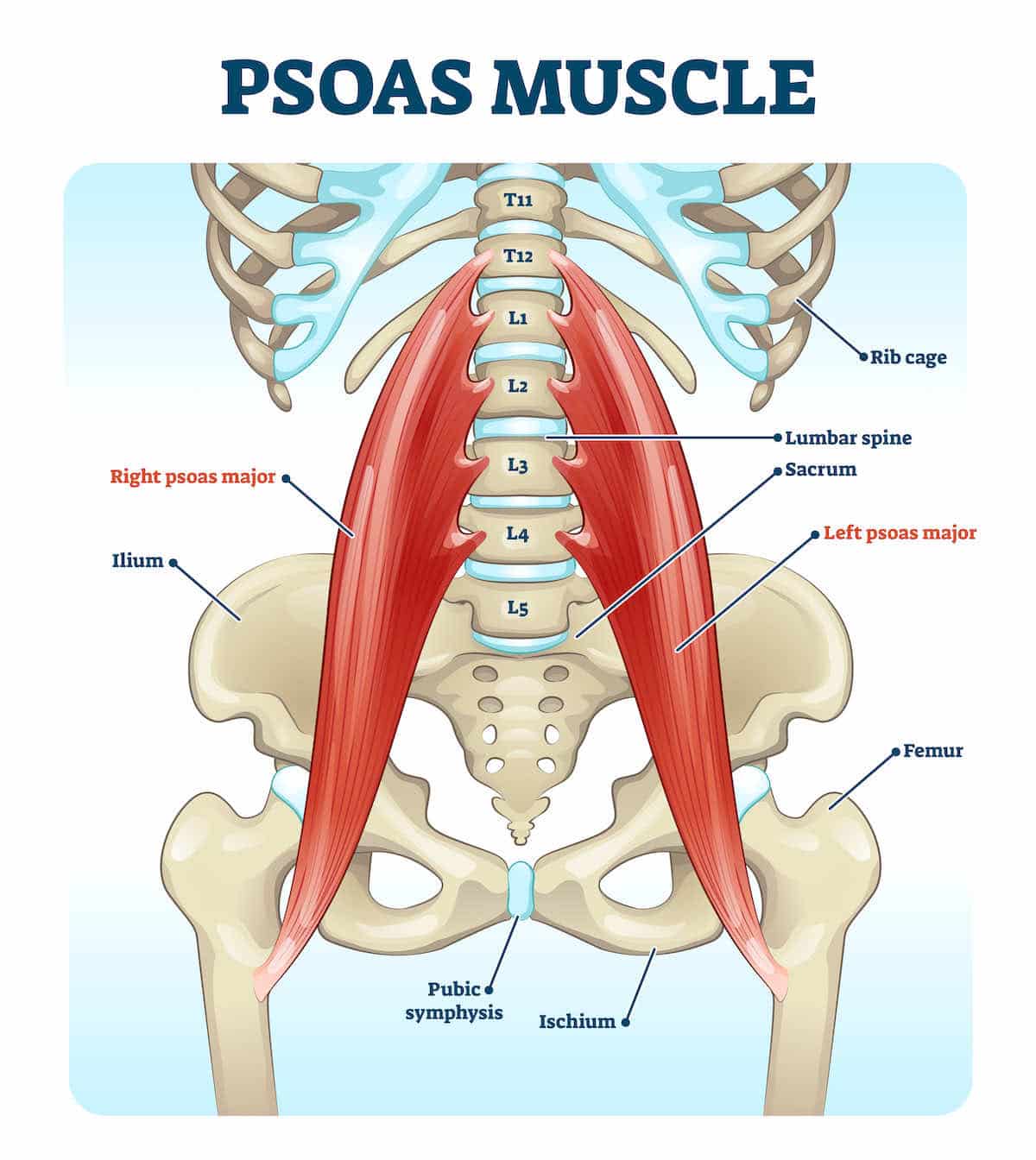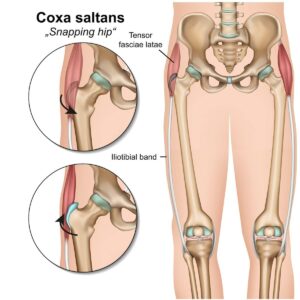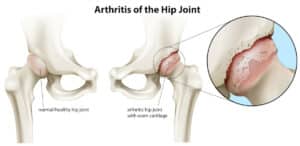Free download: Top 10 Natural & Easy Remedies for Joint Pain from Home. Learn these helpful remedies.
Estimated Reading Time: 4 minutes read
Have you ever experienced a sharp, uncomfortable feeling in your lower back or hips? If so, you might be dealing with psoas pain. The psoas muscle, a deep-seated core muscle connecting the lumbar vertebrae to the femur, is crucial for hip and thigh movements. When this muscle becomes overly tense or used excessively, it can lead to discomfort. This discomfort can hinder your day-to-day activities and lower your quality of life.
But there’s good news. You don’t have to live with this discomfort. With some specific exercises and techniques, you can find immediate relief from psoas pain. Even better, these exercises can help you prevent this kind of pain in the future. The following sections will guide you through some simple yet effective exercises to release the psoas muscle tension and bring you much-needed relief.
Table of Contents
Instant Psoas Release with a Ball
One effective method for psoas pain relief is using a ball to release tension. Here’s how to do it:
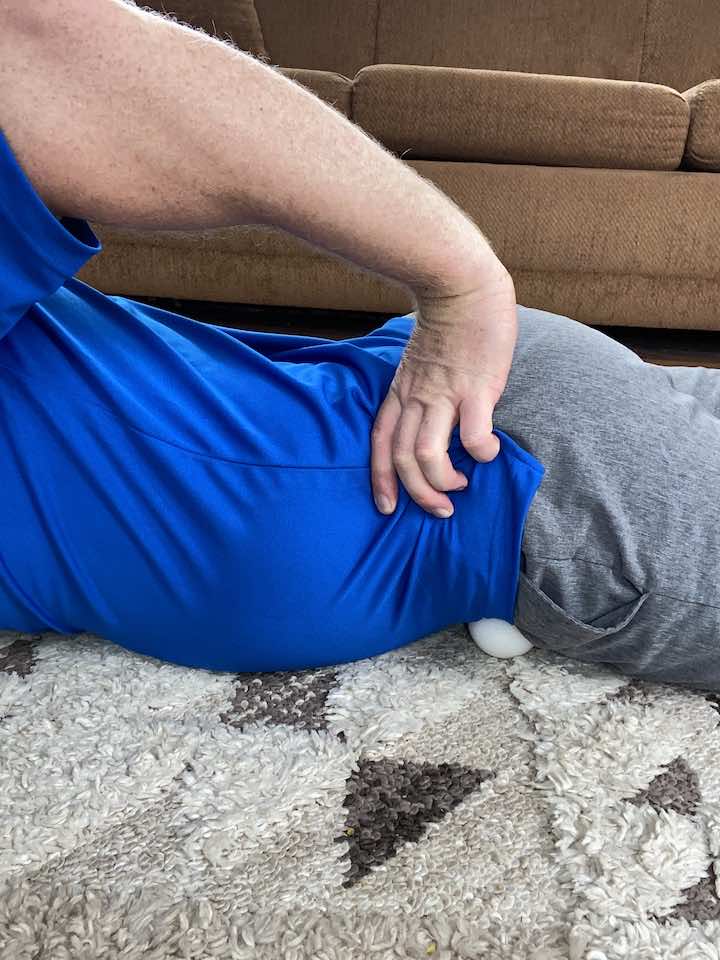
- Lay face down with your legs straight.
- Place a ball between your belly button and hip, searching for a sensitive spot.
- Once you’ve found a tender spot, take a deep breath in. As you exhale, relax as much as possible.
- Hold this position for 5-10 deep breaths, then roll the ball to find any additional tender areas.
Yes, it might be uncomfortable at the moment, but you should feel relief immediately after.
Other Methods to Ease Psoas Pain
1. Foam Roll Hip Flexors
- Starting position: Lay over the foam roller with the stomach to the floor; however, instead of the thighs laying over the foam roll, it will be the front of the hips instead. Support yourself on the elbows (like a plank).
- Gently use your upper body to rock the body forward and back in a straight line on the foam roller.
- Continue rolling for at least 30 seconds or up to 1 minute, as tolerated.
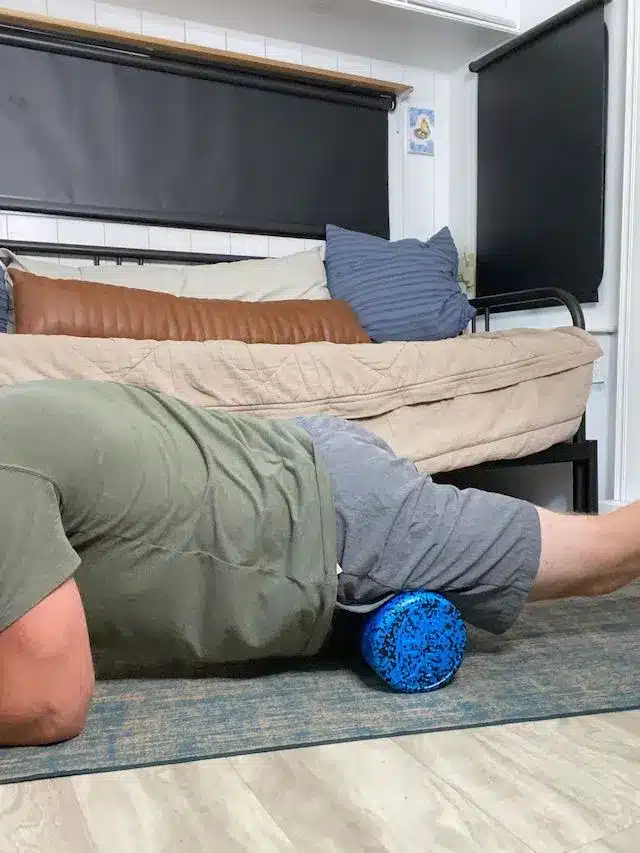
2. Hip Flexor Isometric Hip Strengthening Exercise
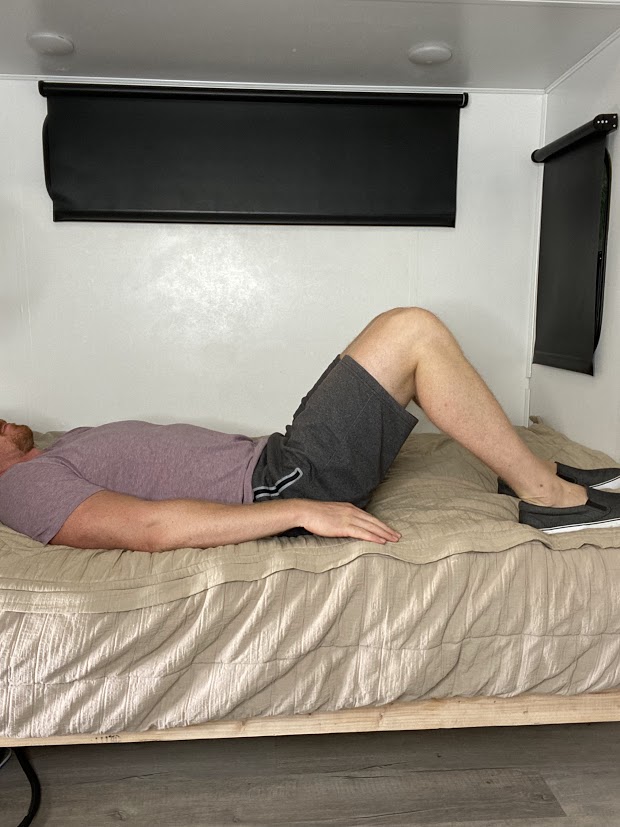
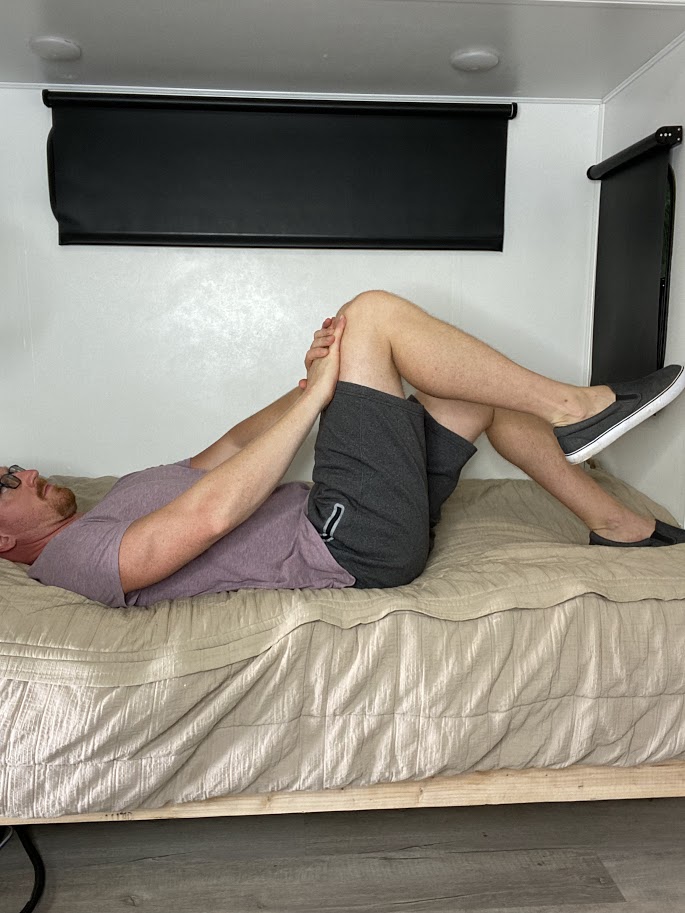
- Begin by bending your knee toward your chest, aiming for a 90-degree angle (straight up).
- While doing so, use your hand to gently resist the movement, preventing your knee from going beyond the 90-degree angle.
- Feel the engagement of your hip flexor muscles as you resist against the movement.
- Hold this isometric contraction for 5 seconds, focusing on the muscle tension.
- Release and repeat the exercise for a total of 10 repetitions.
- Complete 2 sets of this exercise.
3. Supine Hip Flexor and Quad Stretch
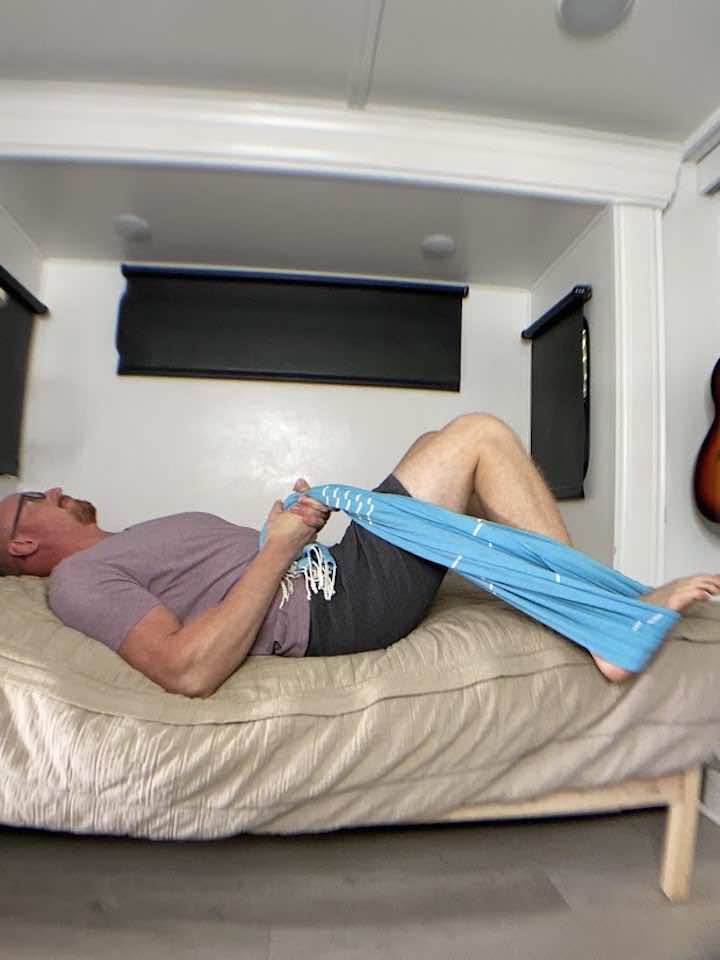
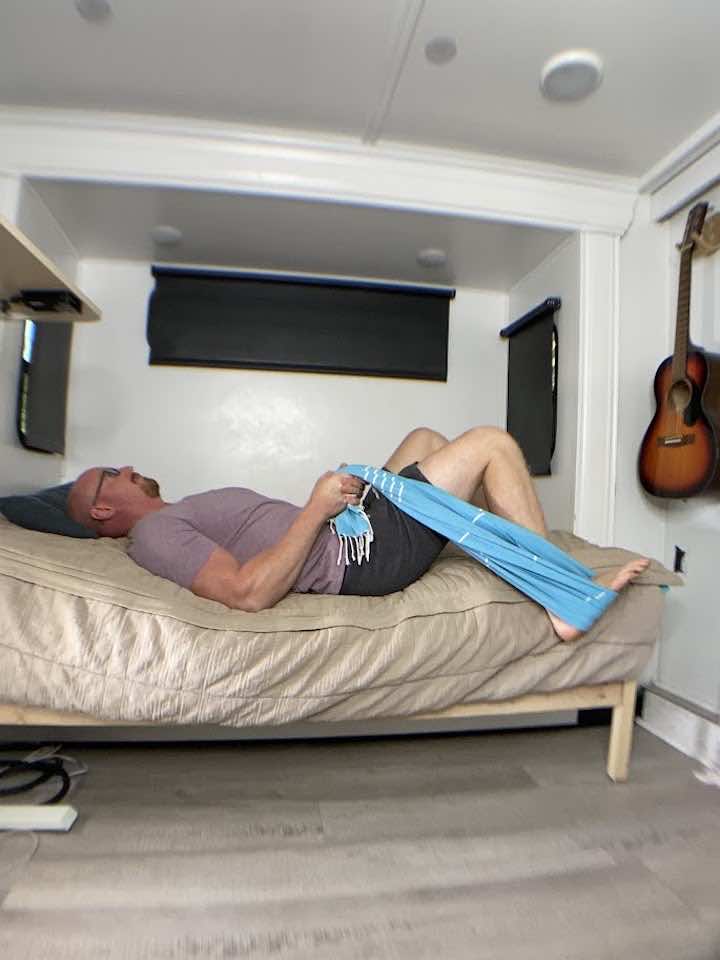
- You’ll be laying on your bed, for this stretch with a non-elastic strap wrapped around your foot (e.g., stretch strap, belt, towel).
- If stretching the right leg, lay on the right side of the bed, and vice versa.
- Position the opposite leg so that the knee is bent and the foot is flat on the bed to support the back.
- Allow the leg to be stretched to gently fall off the side of the bed and hang. You should be holding the strap in your hands.
- Gently bend the knee while pulling back with the strap. Avoid hyperextending the low back.
- You should feel a stretch in the front of the hip, or your hip flexors, and over the quads, or front of the thigh. The front of the knee may also feel stretched.
- Hold for at least 30 seconds to 1 minute.
- Repeat on the opposite leg for an even stretch.
- Perform this stretch for a total of 3 sets on each leg.
4. Half Kneeling Hip Flexor Stretch
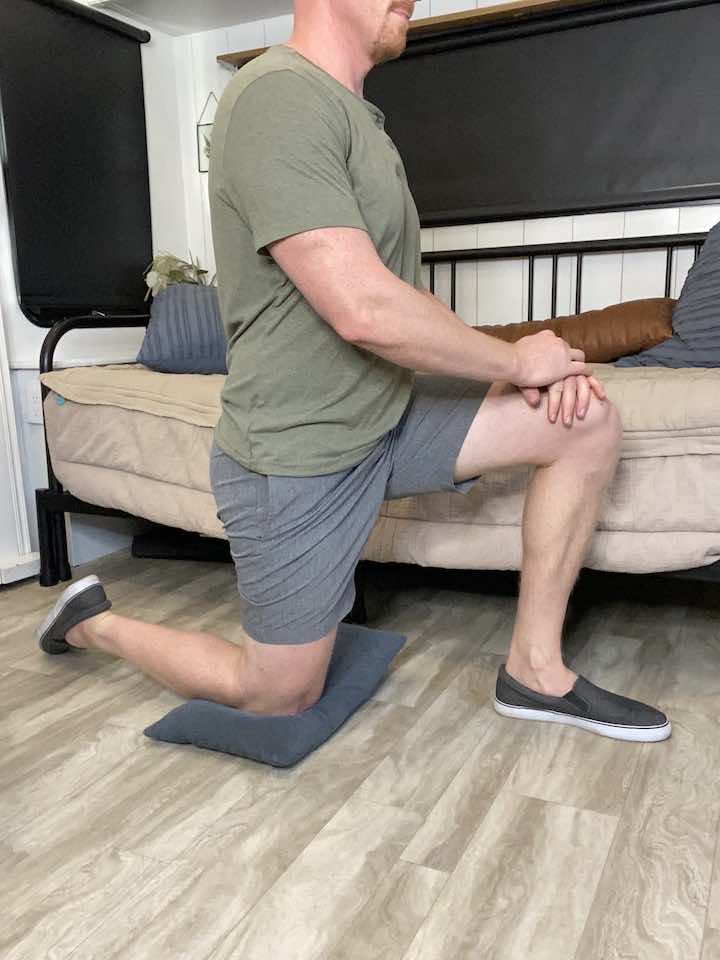
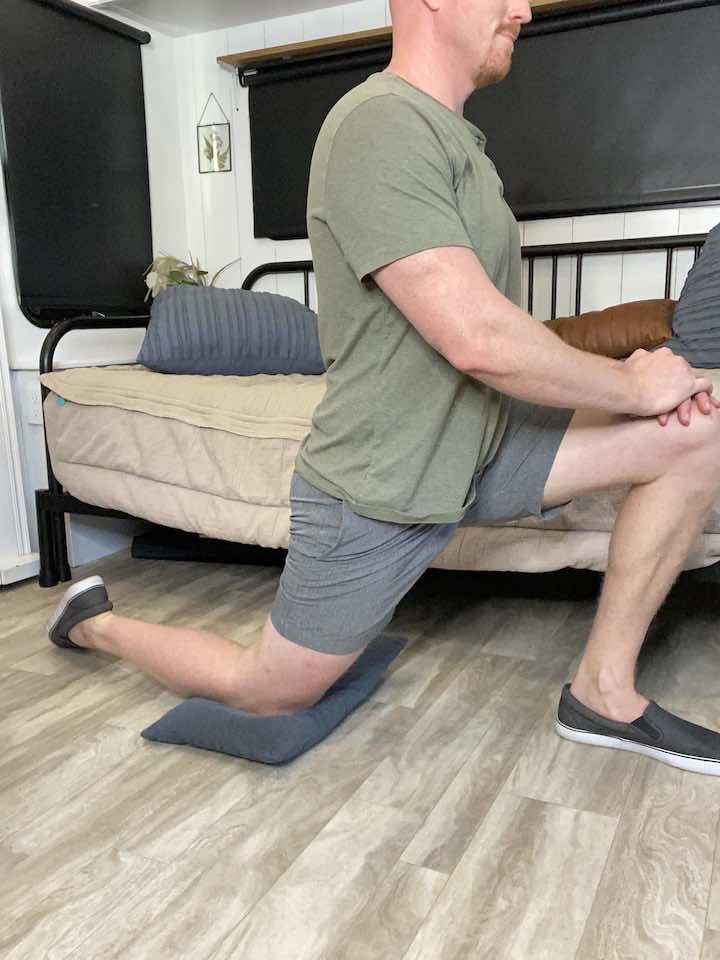
- Starting position: Begin in a half-kneeling position with one foot forward and the other knee on the ground.
- Slowly shift your weight forward while keeping your back straight and your core engaged.
- Hold the stretch for 30 seconds, then repeat on the opposite leg.
- Perform this stretch for a total of 3 sets on each leg.
In Conclusion
In conclusion, taking care of your psoas muscle is an important aspect of maintaining your overall well-being. Not only can regular exercises and stretches relieve existing pain, but they also contribute to preventing future discomfort. These techniques, along with strengthening your core and hips, are the keys to balancing your muscles and preventing psoas pain.
Remember, your body is interconnected. A stronger core and hips can provide better support for your psoas muscle, reducing strain and overuse. But, like any exercise routine, it’s essential to be consistent. Start with the exercises above, listen to your body, and adapt your regimen as needed. And, of course, if you experience severe or persistent pain, it’s always best to consult with a healthcare professional. With the right approach, you can keep psoas pain at bay and continue enjoying an active, pain-free lifestyle.


